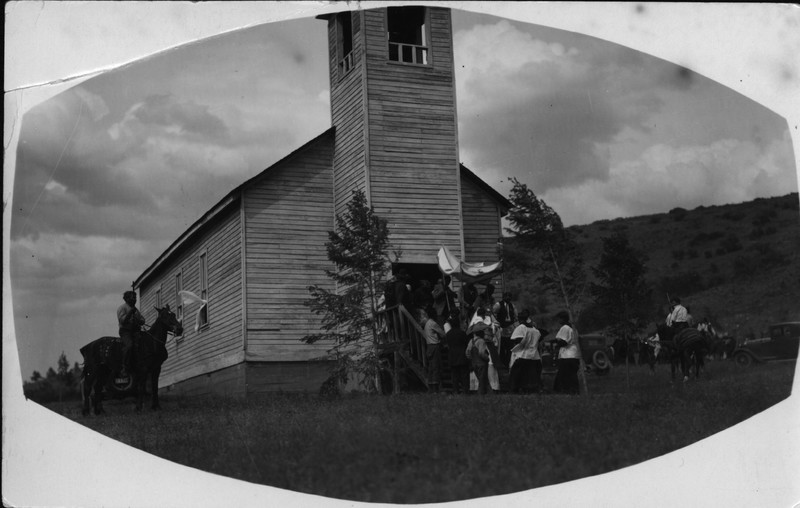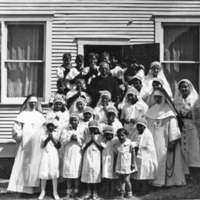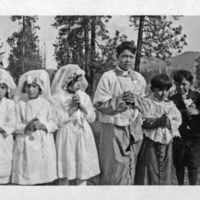Religion
The Plateau Indian's world was forever changed with the arrival of settlers and trappers in the early 19th century. The foreigners introduced diseases the Natives had never seen before, the shaman they had relied on for decades seemed powerless. The Natives gods were weak and powerless against the new diseases. However, the white men prayed to a God who was powerful, and more than capable of healing even against the most deadly diseases. In the 1830’s local Plateau Indians sent a group of men to St. Louis in search of missionaries to help teach them about God. In less than a decade, missionaries arrived in the Inland Northwest and built homes and churches similar to the one shown above.
As mentioned above, Plateau Indians assimilated healing ability with divine power. When the Europeans came to America, they brought with them new viruses and diseases the Indians were not immune to. The Plateau communities relied heavily on shawman to administer medicine and health care to the people. When these new diseases hit communities across the country, shawan did not know how to treat these new diseases. Once the shaman were no longer able to heal, they were no longer seen as powerful humans as they were before. This was especially problematic because the shaman were seen as the members of the community with the most divine knowledge and power. There are obviously similarities between the role of the shaman and the Catholic Priest. When the Natives saw the white man's immunity and healing power against the new diseases, the equated this to divine power. This led to an interest in Christianity, and is the main reason Christianity spread so quickly across Native communities.
The Jesuits were constantly trying to assimilate their cultural beliefs with the Native Americans, but the two cultures did not always completely integrate. Father Prando was a Jesuit who began to incorporate Catholic beliefs on the Rocky Mountains around the 1880s. As Father Prando was celebrating the holy sacrifice of Mass in an Indian camp, the Indians were intrigued to what he was preaching. As Prando was demonstrating the religious traditional blessing Dominus Vobiscum in a, to what seemed to sacred area, he noticed all the chiefs with high ranks sitting in the back of the church, smoking their calumet (smoking pipe). At first, Father Prando was confused by their actions since Western cultures did not include smoking tabacco during religious practices but realized these pipes are part of their religious ceremonies. This is only one of many countless examples that include Native cultures integrating European beliefs with their own. Native communities were very interested in Christianity, but also could not completely abandon their own beliefs completely.



